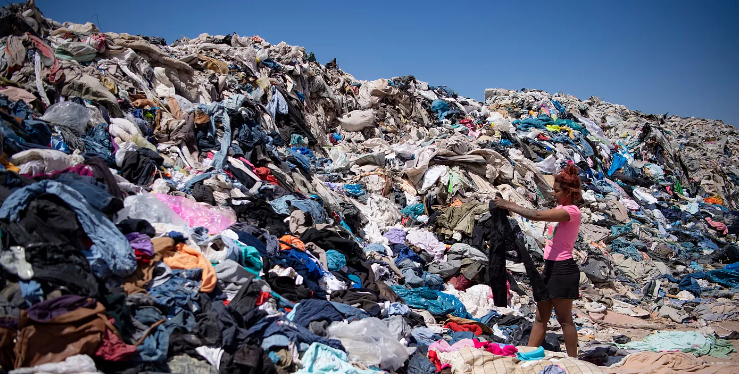In the bustling world of fashion, where trends change as swiftly as the seasons, there’s an epidemic that has quietly taken root over the past decade: fast fashion. Defined by its rapid production of cheap, trendy clothing that often mimics the styles of celebrities, this industry relies on trend replication and low-quality materials to offer affordable fashion to the masses. While it may seem harmless on the surface, the consequences of this industry are far-reaching, affecting our environment, the rights of garment workers, and consumers’ wallets.

One of the key factors behind the growth of this fast fashion phenomenon is the setup of garment factories in rural and economically disadvantaged areas across the globe, particularly in South East Asia. In these regions, workers lack better employment opportunities and are often not protected by labor rights. This exploitation allows for cheaper and faster production, satisfying the insatiable demand and yielding substantial profits for the industry.
While the fast fashion problem is complex and multifaceted, one surprising contributor to its expansion is the world of “influencers”. Fashion influencers are renowned for their impeccable style, often flaunting extravagant outfits that become iconic. However, it’s important to note that these outfits are typically gifted to them or sent as a PR item, or rentals for specific occasions, and the influencers themselves may not directly contribute to the fast fashion dilemma.
However, in today’s digital age, fashion influencers wield considerable power over consumer trends and purchasing decisions, particularly in the realm of fast fashion. Defined by its rapid production of trendy, affordable clothing, fast fashion has reshaped the industry landscape, with influencers playing a pivotal role in its growth and sustainability challenges.
Fast fashion brands thrive on quick turnaround times, constantly churning out new collections that mirror the latest runway trends. This rapid pace aligns perfectly with the dynamic nature of social media platforms where influencers curate and showcase their outfits daily to a vast audience. By showcasing new styles and promoting frequent shopping, influencers fuel the demand for inexpensive, trendy clothing that can be quickly replaced with the next trend.
Fashion influencers influence not only what consumers buy but also how often they buy. Through sponsored posts, collaborations, and affiliate marketing, influencers create a sense of urgency and desire among their followers to stay current with the latest fashion trends. This perpetual cycle of consumption contributes to the phenomenon known as “throwaway culture,” where garments are discarded after only a few wears, exacerbating environmental concerns related to textile waste.
The fast fashion model, driven by influencer marketing, poses significant sustainability challenges. The pressure to constantly produce new clothing at low prices leads to increased resource extraction, greenhouse gas emissions, and exploitation of labor in developing countries. Influencers, by promoting frequent shopping and endorsing multiple brands, inadvertently contribute to these environmental and social impacts.
Despite these challenges, influencers also have the potential to drive positive change within the fashion industry. Many are now using their platforms to advocate for sustainability, ethical production practices, and mindful consumerism. Through collaborations with sustainable brands, promoting second-hand shopping, and advocating for transparency, influencers can encourage their followers to make more informed and conscientious fashion choices.
Fashion influencers wield significant influence over consumer behavior and trends, particularly within the fast fashion sector. While their promotional activities contribute to the industry’s rapid growth and accessibility, they also raise important sustainability concerns. As influencers increasingly engage with sustainability initiatives and ethical brands, they have the power to shape a more sustainable future for fashion, fostering a balance between style, consumerism, and environmental responsibility. By leveraging their influence responsibly, influencers can contribute positively to the evolving landscape of fashion consumption and sustainability practices.

